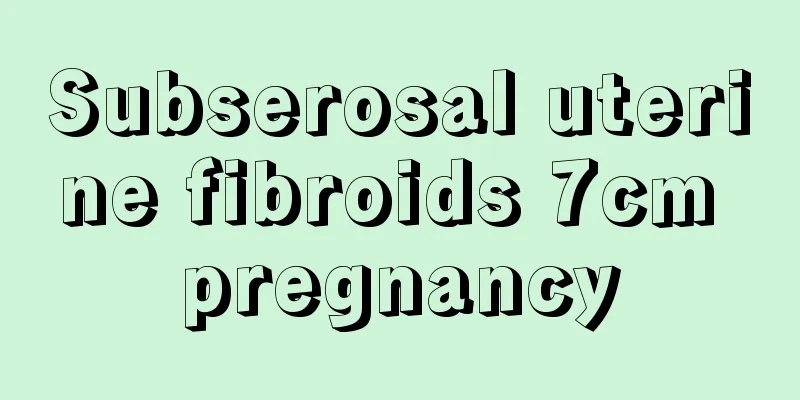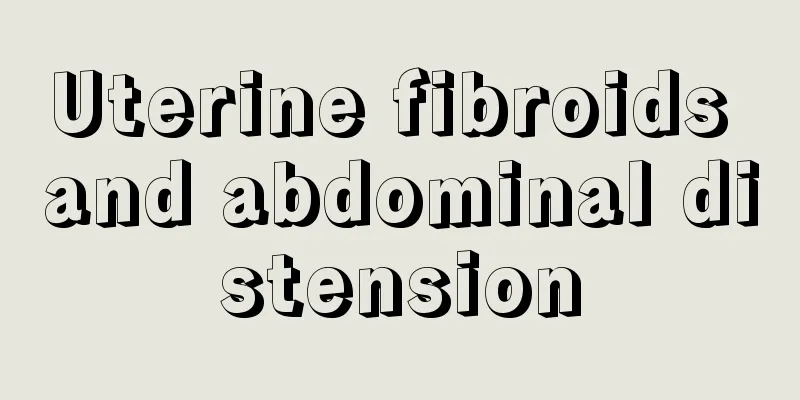Subserosal uterine fibroids 7cm pregnancy

|
Pregnancy and childbirth are considered the happiest things in life. But Xiao Zhang, who just became pregnant, was not so happy. It turned out that a week before confirming her pregnancy, Xiao Zhang had just learned that she had uterine fibroids, and it was a subserosal uterine fibroid of 7CM. At the same time, she knew that women with uterine fibroids had a very high chance of miscarriage after pregnancy. Therefore, she was very worried about the safety of the baby in her belly. Can I keep the baby if my uterine fibroid is 7cm after pregnancy? For patients with uterine fibroids, if the size of the fibroids does not exceed 5 cm, as long as the growth rate is slow and the growth location is not special, there is basically no need to rush for surgery. However, if the diameter of uterine fibroids exceeds 3 cm before pregnancy and they grow larger during pregnancy, the chances of degeneration, miscarriage and premature birth will increase. What causes uterine fibroids? Traditional Chinese medicine believes that uterine fibroids are caused by internal injuries caused by the seven emotions, organ dysfunction, and qi stagnation and blood stasis. Modern medical research has found that the amount of estrogen receptors in fibroid tissue is higher than that in normal uterine muscle tissue. This suggests that the occurrence of uterine fibroids is related to endocrine disorders caused by long-term excessive estrogen levels. At the same time, hormone metabolism is regulated by higher nerve centers, so the activity of nerve centers may also play an important role in promoting this disease. In addition, cytogenetic studies have shown that some fibroids have cytogenetic abnormalities, so it is recommended to achieve good results. The exact cause of uterine fibroids is unknown, but it may be related to excessively high estrogen levels in the body and long-term estrogen stimulation. 1. Occasionally seen in women after menarche, more common in middle-aged women. After menopause, some fibroids stop growing and gradually shrink, but they cannot disappear on their own; 2. Fibroids are often complicated by endometrial hyperplasia; 3. Patients with ovarian granulosa cell tumor and theca cell tumor (which can secrete estrogen) often have uterine fibroids; 4. During pregnancy, estrogen levels increase and fibroids often grow rapidly; 5. Exogenous estrogen can accelerate the growth of fibroids. Treatment of uterine fibroids 1. Regular follow-up: For patients with small fibroids, no symptoms, no complications, no degeneration, and no impact on health; perimenopausal patients without clinical symptoms, only regular follow-up observation (once every 3 to 6 months) is required, and the treatment will be decided based on the review results. 2. Drug therapy: The basis of drug therapy in the treatment of uterine fibroids is that uterine fibroids are sex hormone-dependent tumors, so drugs that antagonize sex hormones are used for treatment. Other androgens, progestins and vitamins are also used. Experts remind: These two methods are mainly suitable for young people who want to retain their fertility; premenopausal women with small fibroids and mild symptoms; those with combined medical or surgical diseases who are unable to undergo surgery or are unwilling to undergo surgery, etc. 3. Surgical treatment: Surgical treatment of uterine fibroids includes hysterectomy and myomectomy. (1) Hysterectomy: When expectant management and drug therapy fail to improve the patient's symptoms, patients who need surgery but are not eligible for myoma removal should undergo hysterectomy. Hysterectomy can be performed by total hysterectomy or suprapubic hysterectomy. Total hysterectomy is generally recommended, especially for those with cervical hypertrophy, laceration or severe erosion. However, if the patient's general condition is poor and technical conditions are limited, only subtotal hysterectomy can be performed. The incidence of stump cancer is only about 1-4%, but regular check-ups are still advisable after surgery. (2) Myomectomy: This is to remove the fibroids on the uterus. The surgery to preserve the uterus is mainly used for those under 45 years old, especially those under 40 years old. This is not only for infertile women who have no children, but also for those who have children. Myomas with a larger diameter than 6 cm, menorrhagia that is ineffective with conservative medication, or compression symptoms, submucosal fibroids; those with faster-growing fibroids should also undergo enucleation for the sake of physical and mental health. 4. Minimally invasive radiofrequency ablation is used to treat uterine fibroids without surgery. Radiofrequency ablation does not require laparotomy to protect the uterus. The operation is performed under the full control of the ultrasound screen. With dynamic B-ultrasound guidance, the superconducting needle intervenes in the lesion, with accurate temperature control, no damage to normal tissues, and accurate intervention in the lesion site. Through biological high fever, the diseased tissue is dehydrated, coagulated, and necrotic, and is absorbed by normal tissue and automatically excreted. This can achieve the goal of thermal coagulation to eliminate uterine fibroids without affecting the normal function of the uterus. |
<<: Panax notoginseng powder cured uterine fibroids
>>: Is moxibustion effective for uterine fibroids?
Recommend
Is it good to eat strawberries during menstruation?
Many of my friends like to eat some strawberry sp...
Early menopause? Increased breast cancer risk? Some misunderstandings about IVF ovulation induction treatment...
"Nurse, my physical examination showed that ...
How to maintain cervical polyp after surgery
Important reminder: Cervical polyps are a very co...
Reasons and treatments for dark and light menstruation
Menstruation is of great significance to female f...
Four words actually ruined a woman's life
Many women suffer from gynecological diseases, wh...
Vulva itching after using sanitary napkin
Sanitary napkins are essential items for women du...
Is there anyone who knows how to eat pork better than people from Northeast China?
When you mention Northeastern cuisine, what image...
Causes of uterine calcification
Endometrial calcifications can actually directly ...
What are the benefits of eating steamed pears for women
Pears are a common fruit and can be eaten in many...
Is nose reduction surgery painful?
Look at the people around you. Apart from the sta...
11-year-old boy's heart stopped beating for 52 hours! Beware of fulminant myocarditis
Recently, an 11-year-old boy in Guangdong suffere...
Can oral vitamin E whiten skin?
Not really Although oral vitamin E has a certain ...
Is breast tenderness normal during 3 months of pregnancy?
The expectant mother's breasts begin to expan...
Is barbecue healthy? How to eat barbecue in a healthy way?
With the development of the times, barbecue has g...
Can I eat brown sugar if I have adenomyosis?
Adenomyosis is a relatively cruel disease for wom...









